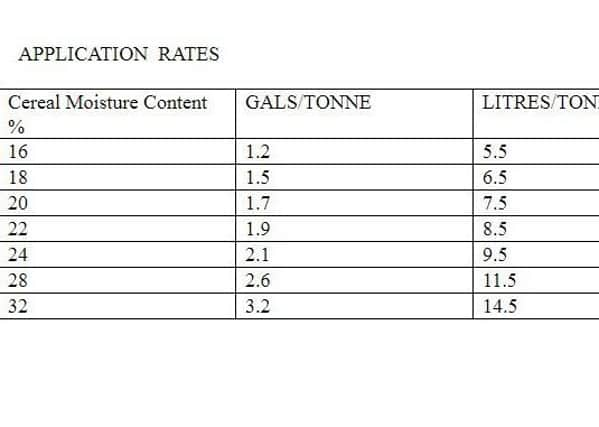Keep all harvested crops free from pests


In order to ensure harvested crops are kept free from pests, stores need to be thoroughly cleaned to ensure any debris that may be harbouring pests is removed. Pests arise from within the store and not from harvested grain. Reldan can be applied to empty stores to combat grain store pests.
Autumn planning
The recent rainfall will bring slugs back up onto the soil surface and there will certainly be a need to assess numbers for autumn planting. An easy way to trap is to use dry food such as breakfast cereal (muesli) or similar and place a tablespoon under a slate or fertiliser bag. Traps should be checked early in the morning approximately two days after being placed in the field. Slugs don’t like fine firm seedbeds so good cultivation can reduce the risk of damage as can deeper sowing. There are also some cereal seed treatments which can protect seed hollowing by slugs but damage to shoots remain a threat. BYDV protection can be given in seed treatment as well as takeall and autumn foliar diseases.
Potatoes
Advertisement
Hide AdAdvertisement
Hide AdThe risk of blight remains high with great variations in particular areas due to localised showers. To try and keep crops free from blight where pressure is severe requires short intervals appropriate for high risk and also the use of fungicide products with curative activity. Fungicides with good rainfastness will be very beneficial given the current showery conditions, especially because it’s been difficult to accurately predict the timing and location of showers.
Propionic Acid
Propionic acid has an energy value of 1.5 times that of barley so as well as preserving the grain it also adds to its energy value. With Propionic treatment, harvesting can take place when there is still surface dampness on the grain, dew or rain. Harvesting can start earlier in the morning or after rain and continue later at night, giving a quicker more flexible harvest, which leaves extra time for autumn cultivations. By harvesting before grain is fully ‘ripe’ a higher yield is also obtained, reduced shedding losses may save 200kg per hectare.
Natural vitamin E levels in moist grain, whether treated or not, are destroyed during storage. When moist grain forms a major part of the diet a mineral/vitamin supplement high in vitamin E should be used.
Treated grain can be stored simply on a dry floor. It should not be stored with untreated grain. Check MC and auger rate regularly.